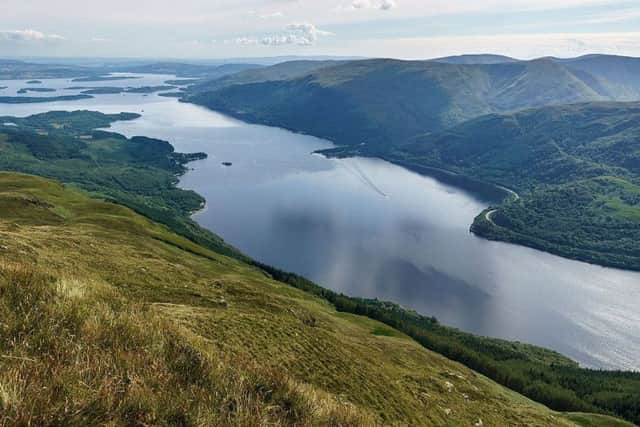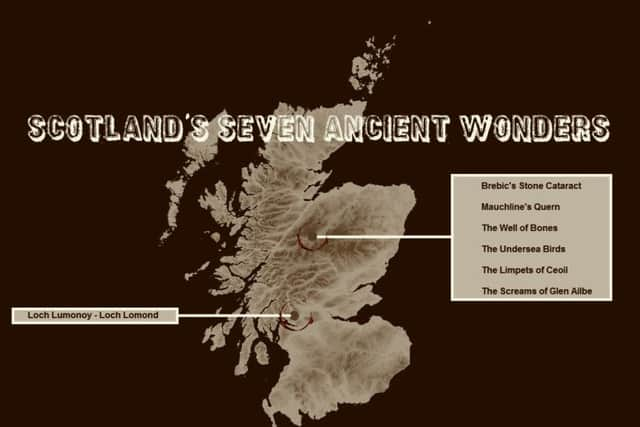Scotland's seven '˜ancient wonders' revealed in historic manuscript
Spellbound by the ‘wonders’ described in a 1000-year-old book titled Mirabilia Brittonium, or the Wonders of Britain, Prof Andrew Evans has made it his mission to travel the length and breadth of the British Isles and pin down their whereabouts.
Dr Evans, a senior geography lecturer at the University of Leeds, first came across the tome while on the search for a name for his eldest child.
Advertisement
Hide AdIt is believed that a monk compiled the list of wonders between the 8th and 12th centuries AD.


There are 26 wonders in total, the vast majority of them in Wales, followed by seven in Scotland, four in England and two in Ireland.
However, unlike the magnificent man-made structures that made up the Seven Wonders of the Ancient World, the Mirabilia Brittonium consists of a mix of geographical and mythological marvels that are ‘rooted in the very foundations of Britain’.
A list of the wonders can be found as an appendix in some copies of the Historia Brittonum, which was written by Monk Nennius around the year 829AD.


Some of the ancient features match up rather accurately with existing structures and legends.
The Fiery Pools in Somerset tally up well with the geothermally-heated Roman baths in Bath, while Loch Lumonoy, described as a lake peppered with sixty islands, sixty rocks encircling it and sixty rivers flowing into it, is believed to refer to Loch Lomond.
Advertisement
Hide AdThe full text relating to Loch Lomonoy from the original manuscript reads: “The first wonder is the lake Lumonoy. In there are sixty islands, and men dwell there, and sixty rocks encircle it, with an eagle’s nest on each rock. There are also sixty rivers flowing into that place, and nothing goes out of there to the sea except one river, which is called Lenm/Lenin.”


Loch Lumonoy/Lomond remains the only wonder from the seven Scottish examples to have been identified. With ambiguous names such as ‘The Limpets of Ceoil’ and ‘The Undersea Birds’, the other half dozen could well refer to myths and other phenomena.
Advertisement
Hide AdElsewhere, the legend of the Circling Rock, which describes a mountain that turns three full circles in a year, could refer to a standing stone named Tyfrydog’s Thief, at Clorach on Angelsey. Legend has it that the stone circles it field three times one night each year.
While the chances of discovering the locations of all 26 wonders are slim, Dr Evans is determined to map as many of them as possible.
“Some of them are active and still really spectacular,” he explained.
Scotland’s seven ancient wonders
• Brebic’s Stone Cataract
• Mauchline’s Quern
• The Well of Bones
• The Undersea Birds
• The Screams of Glen Ailbe
• The Limpets of Ceoil
• Loch Lumonoy - Loch Lomond
